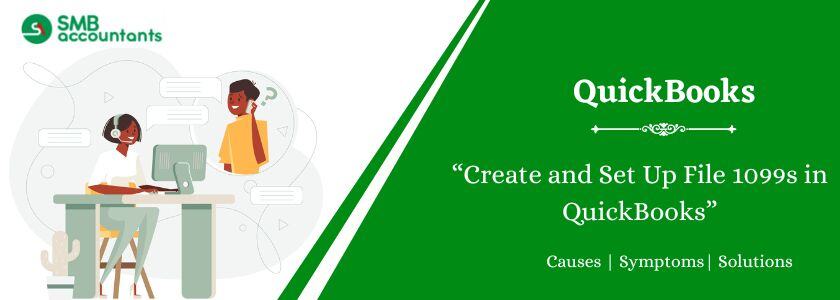What is S-Corp in QuickBooks?
S-Corp stands for "S corporation," which is a type of corporation that has elected to be taxed under Subchapter S of the Internal Revenue Code. In QuickBooks, an S-Corp is a legal entity that can be set up as a company type. When you create an S-Corp in QuickBooks, it will have its chart of accounts, financial statements, and other important financial data.
Additionally, QuickBooks offers specific tools and features for S-corporations, such as the ability to track shareholder equity and distributions and generate reports that help owners and managers understand their financial performance. It's important to note that setting up an S-corp in QuickBooks involves legal and tax implications, and you should consult with a qualified attorney or tax professional before making any decisions regarding business structure.
IRS Requirements for S-Corporation
The IRS has several requirements for S-corporations, including:
- Eligibility: To qualify as an S-Corporation, a business must meet certain eligibility requirements. For example, it must be a domestic corporation, have only allowable shareholders (such as individuals, certain trusts, and estates), and have no more than 100 shareholders.
- IRS Form 2553: To elect S-corporation status, a business must file IRS Form 2553 with the IRS. The form must be filed within 2 months and 15 days after the start of the tax year for which the election is to be effective or at any time during the preceding tax year.
- Pass-through taxation: S-corporations are pass-through entities, which means that the business itself is not taxed. Instead, the income, deductions, and credits of the S-corporation "pass-through" to the shareholders, who report the items on their tax returns.
- Shareholder compensation: S-corporation shareholders who perform services for the business must receive reasonable compensation, which is subject to payroll taxes such as Social Security and Medicare.
- Tax returns: S-corporations must file an annual tax return on IRS Form 1120S, which reports the business's income, deductions, and credits. Additionally, shareholders must receive a Schedule K-1 that reports their share of the S-corporation's income, deductions, and credits.
- Recordkeeping: S-corporations must maintain adequate records to support their tax returns and comply with IRS regulations.
It's important to consult with a qualified tax professional to ensure that your S-corporation complies with all applicable IRS requirements.
Read This: How To Categorize Owner Distribution in QuickBooks?
How to File the S-Corp Taxes?
S-Corp should at minimum file the form 1120S and the Schedule K-1. If in case the shareholders are associated with S-Corp who are drawing the salary, then payroll taxes also become the responsibility of S-Corp.
Federal tax and FICA taxes are included in payroll taxes that are withheld from the paychecks of all employees, and also from the unemployment taxes. Reporting of Payroll taxes is done on Forms 940 and 941.
What are the Merits of S-Corp?
S-Corps have the following merits:
- Additionally, S-Corporation status can reduce the personal earnings tax bill for business owners.
- As profits or dividends from the commercial enterprise.
- It is common for S-Crop owners to reduce their legal responsibility.
- In addition, S-corporations generate deductions for commercial enterprise fees and wages paid to their employees.
- Tax benefits are one of the major advantages of registering as an S-crop.
- Entity-level federal taxes are no longer due.
- Especially in the early days of a business, saving money on company taxes is advantageous.
- Shareholders of S-Corporations may be company employees, earn salaries, and receive company dividends that are tax-free so long as the dividends do not exceed their inventory basis.
- Dividends that exceed a shareholder's inventory basis are taxed as capital gains.
- Taxes on these are lower than on everyday income, however.
- Additionally, it includes transferring interests or modifying belongings basis without triggering negative tax consequences or having to comply with complicated accounting rules.
What are the Demerits of S-Crop:
- The company has strict formalities, such as annual administrators and shareholders meetings, keeping company minutes, and keeping a separate account at a financial institution.
- The enterprise may have difficulty delivering to customers or going public if there are fewer than 100 shareholders who meet positive eligibility requirements.
- Setting up is more costly and tedious, as you have to file paperwork with your nation and pay over a hundred dollars.
- Furthermore, you must choose S-corporation status with the IRS.
Working in an S-Corp
S-corp is a type of corporation, especially for tax purposes, who are elected to ensure that their deductions, credits, loss, and income are pass-through owners, referred to as shareholders, of the company.
They are responsible for submitting and completing Form 1120S to the IRS. They also have to provide Schedule K-1 to every shareholder, so that they can report their net earnings share on their tax returns.
What are the Tax Obligations of Self-Employment for S-Corp?
S-corp shareholders do not have to pay the self-employment tax on their net earnings share from the corporation. If the shareholder is receiving the salary FICA which is Social Security and Medicare tax, will get deducted from the paychecks they are receiving. Also, the S-corp will become responsible for paying the share of employee FICA tax.
Advantages of S-Corp Accounting:
- Because you do not have to pay self-employment taxes on the part of your earnings that isn't considered salary, you can save a lot of money on taxes.
- A company can also probably qualify for a higher medical insurance option than an individual.
- Double taxation is something corporations have to pay. S-corps do not have to pay double taxation.
- As with a c corporation's earnings distribution, it is taxed twice in your financial institution account.
- The S-corp provides legal responsibility protection, as do other formal enterprise entities.
- This is the most effective.
- In the event something goes wrong, you may be able to make claims against your nonpublic property.
Disadvantages of S-Corp Accounting:
- Regardless of whether you have employed any employees, as an S-Crop you are now your employee, because you have to pay payroll taxes and document quarterly payroll reports.
- In the dimensions of non-formal to extraordinary formal, S-corps are at the formal end, and S-crops are at the formal end.
- Even though S-Crop is a single operation, you are the owner and employee of the company.
- S-Corp earnings are taxed even if you leave them within the company.
- In the long run, you can have up to one hundred shareholders, but they must all be US citizens or resident aliens.
This Read: How to Record Owner Investment in QuickBooks Desktop?
How To Record S-Corp Distribution in QuickBooks
S corporations have various types of payments that can be made to their shareholders, including salaries, dividends, expense reimbursements, loan repayments, and profit distributions. It is crucial to exercise caution when filing each type of payment for the organization's income tax return. Returning to the original sentence, shareholder dividends can be accurately described as the distribution of accumulated earnings.
- Individual Shareholder Distribution.
- Shareholders of S-corps, other Payments.
- Accounting Statement.
- Distribution to Shareholders.
Issues Users Face While Recording S-corp Distribution in QuickBooks Desktop
You are an S-Corp and paying a reasonable salary to yourself and you have also filed a W-2 for it. Now, you receive a payment from the client, which is large, and you are not willing to issue a distribution to yourself.
You may be confused about how you are going to categorize this type of payment to yourself as the LLC filing S-Corp’s sole member. Now the question arises whether this distribution to yourself is an expense or not.
How to Set up Shareholder Distribution in QuickBooks Online
As a business owner, it is valuable to understand the process of establishing shareholder distributions in QuickBooks. This allows you to effectively monitor and manage the allocation of profits to shareholders. It is crucial to ensure that shareholders receive their rightful portion of profits and to ensure the company's adherence to relevant laws and regulations. Moreover, the setup of shareholder distribution in QuickBooks aids in maintaining a clear overview of your business's financial well-being.
- Click on the "Gear Icon" from the menu.
- Choose "All lists" from the options.
- Select "Chart of Accounts".
- Click on the "New" button.
- Pick "Owner's equity" from the available options.
- Choose "Partner Distributions". Enter the desired account name.
- Click on "Save and Close" to finalize the setup.
Questions and issues like these may arise frequently, so to get the correct answer of same, you can get in touch with the SMB QuickBooks tech support helpdesk.
S-Corp Bookkeeping In QuickBooks:
To meet state and state year-end tax reporting requirements, no matter how small the S-crop is, it must conduct business transactions throughout the year. Also, external parties, such as lenders or investors, may want to review the company's books. To keep up with accounting duties, the general ledger needs to be updated at least once a month but may be updated more or less depending on the level of activity.
Keeping track of revenue is the main responsibility of S-company. S-company can generate income in a variety of ways, including
Income:
A S-company's income accounting is one of its most important bookkeeping tasks. It is very helpful to divide your income by categories, including income from the sale of services, rent, interest, capital income, and income from the sale of assets. It is used to increase marketing efforts.
Sale of company Assets:
A balance sheet reports information about assets and liabilities separately from income and expenditure. Asset values are confirmed at the time of acquisition, and the value of an asset is equal to the acquisition fees to protect the property. Depreciation is applied to assets and debt payments are applied to liabilities. Record the initial price of the obligation.
Cost:
Any expenses incurred by the company by operational legal requirements are included. Goods and services paid to suppliers, wages, loans, interest rates, and taxes are among the items that are included. The income statement shows revenue and expense transactions based on accounting software.
They are responsible for their company seats:
As a shareholder, you are responsible for your seats in the S-company. The base of shareholders usually refers to the amount you pay to own the company's shares. The base increases when the company announces a profit or loss at the end of the year and decreases when the company records a loss. If the company records a loss, the base will decrease. The S-company wishes to educate its shareholders about accounting requirements.
Frequently Asked Questions
How do you report distributions on S Corp?
Dividend payments made to shareholders of an S corporation are recorded on Form 1099-DIV and Schedule K, Line 17c. Repayments of loans to shareholders are documented on Schedule K, Line 16e, and the individual Schedule K-1 of each shareholder, specifically on Line 16, using the reference code "E."
How do you Record Distributions to owners?
When recording an owner withdrawal, the journal entry should increase the owner's equity account and decrease cash by debiting the former and crediting the latter. Since only balance sheet accounts are involved (cash and owner's equity), owner withdrawals do not impact the net income.
What are S Corp distributions called?
S-Corp "dividends" refer to the distribution of profits made by the company to its shareholders. S-Corporations operate as pass-through entities, meaning they are not subject to federal income tax on their profits. Instead, the profits are allocated to the shareholders, who are responsible for reporting them on their tax returns.


